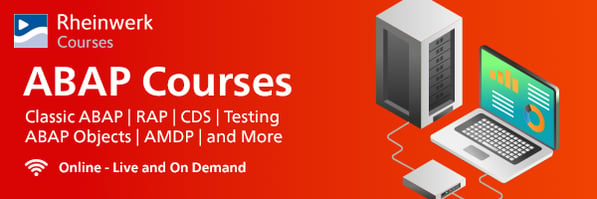SAP HANA was introduced in 2010 as an in-memory database, capable of running data operations at the database level, rather than at the application level. It has since evolved into a platform with tools and technologies that offer application, integration, database, and analytical services.
As an ABAP developer, you should carefully consider your approach to designing business applications that run on SAP HANA. A good design can guarantee that SAP HANA-specific features and capabilities bring the most benefit to your applications.
The use of these SAP HANA-specific features requires a change in the way applications are designed and implemented. This structural shift in application programming on the SAP HANA platform is referred to as the code-to-data paradigm.
The Code-to-Data Paradigm
Using SAP HANA-specific features such as columnar databases, compression, and parallel processing requires a developer to consider new ways of designing and implementing both existing and new applications on the in-memory database. This brings us to the code-to-data paradigm, which can ensure that your applications consider SAP HANA’s features to deliver applications with massive real-time data processing capabilities.
The traditional programming approach encouraged developers to keep loads away from the database layer. Applications were designed to retrieve all the data needed at once, and complex calculations and operations were then performed on the internal tables in the application layer. This recommendation is important when a traditional database is used, since database hardware is not capable of processing massive data in real time. This also leads to performance issues, as data retrieval can be slow.
However, with an in-memory database like SAP HANA, the recommendation to move the code away from the database becomes less important. Instead, it’s recommended to push more of the load of expensive calculation, data processing, and mathematical operations to the database layer, since SAP HANA’s capabilities and features enable applications to process data in real time.
For the greatest performance, a developer’s goal should be to bring back only the required details to the application server, rather than moving a much larger volume of intermediate data and then calculating the details in ABAP.
The code-to-data paradigm inspires application developers to use SAP HANA-specific features and capabilities that assist in designing optimized applications for real-time data processing. The application logic required to perform complex data operations such as calculation, aggregation, and text processing is moved down to the database layer by implementing one of the many techniques available. The availability of specific techniques depends on the SAP NetWeaver or ABAP platform release used in your landscape.
Overview of ABAP Development for SAP HANA Book
ABAP programming for SAP HANA is different from traditional ABAP programming. We published ABAP Development for SAP HANA to teach you how to create SAP HANA-optimized ABAP applications.
Begin with an introduction to SAP HANA and its development environment and tools. Then learn about the code-to-data paradigm, which governs how applications should be coded for SAP HANA databases.
Dive into backend ABAP programming for SAP HANA and learn how to get read-write access to the database using ABAP database connectivity, SQLScript, and ABAP SQL; how to model data with CDS views and calculation views; and how to use BOPF to create business objects in ABAP applications.
Perform runtime analysis to ensure applications are working efficiently and explore the SAP Business Technology Platform, ABAP environment to see how SAP HANA and ABAP can be used to build cloud applications.
Wrap up with details on general programming guidelines for ABAP development and guidance for migrating code to SAP HANA.
Who Is This Book For?
This book is for developers who want to build their ABAP programming skills for applications that run on SAP HANA.
About the Author
Mohd Mohsin Ahmed is an SAP HANA certified professional with more than 14 years of experience as an SAP technical consultant. He currently specializes in implementing SAP S/4HANA solutions with a variety of methodologies, across various industry sectors, including manufacturing, retail, food and beverage, life sciences, energy and utilities, public sector, and IT. He holds a degree in computer science engineering from Jawaharlal Nehru Technological University in Hyderabad, India.
Sumit Dipak Naik is an experienced ABAP and SAP HANA certified professional. He has more than 16 years of technical consulting, solutioning, and management experience. His focus is in implementing SAP ERP and SAP S/4HANA solutions, across various industry sectors, including telecommunications, food and beverages, manufacturing, retail, life sciences, energy and utilities, public sector, and IT. He has extensive experience with different implementation methodologies, approaches, and accelerators.
How to Purchase
If you’re interested in purchasing ABAP Development for SAP HANA, follow this link and choose the format that works best for you: e-book, print edition, or bundle (both e-book and print).
Learn ABAP with Rheinwerk Courses!
Ready to level up your ABAP skills? Explore the full range of our ABAP-focused online courses, from foundational programming to advanced RAP, CDS, AMDP, unit testing, and more. Each one is instructor-led (live and on-demand), includes recordings and slide decks, and is designed to give you practical take-away skills you can apply right away in your SAP landscape. Click on the banner below to get started!
If you want to continue learning about all things ABAP, or if you want information on other upcoming books or special offers, make sure to sign up for our programming topic newsletters or our weekly blog recap.




Comments